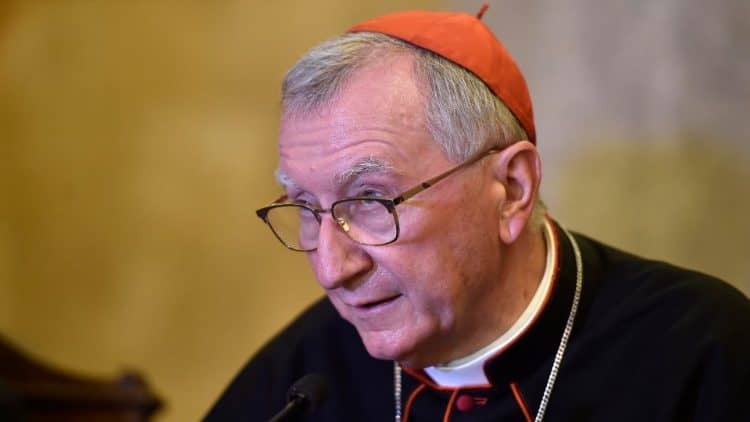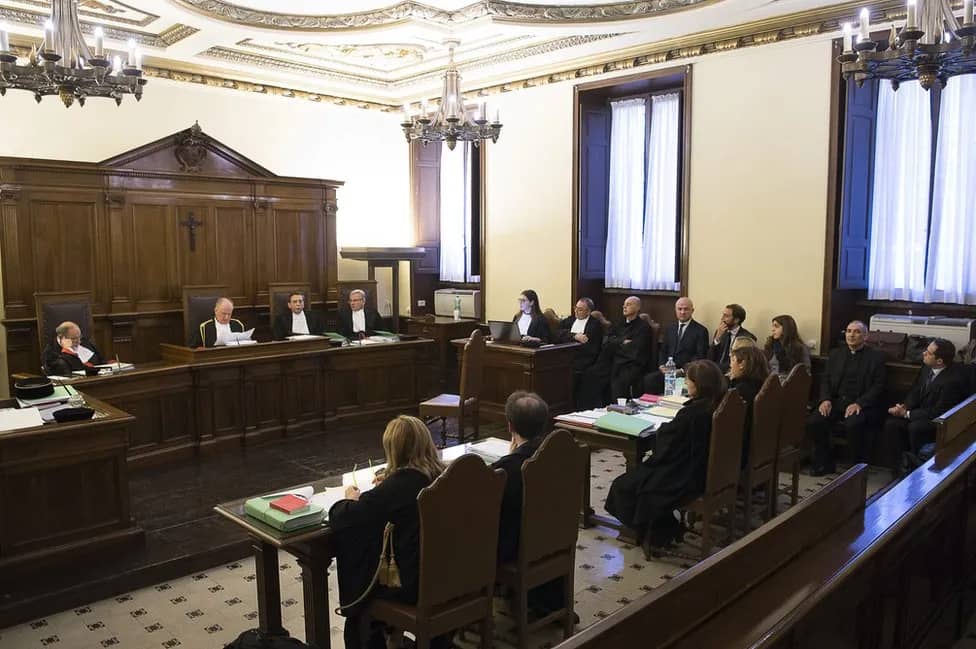ROME – Earlier this year global Catholicism around the world was jolted by shocking accusations made by Archbishop Carlo Maria Viganò, former Vatican ambassador to the United States, who published a scathing letter accusing Pope Francis of negligence in handling allegations of sexual misconduct on the part of ex-Cardinal Theodore McCarrick and asking the pontiff to resign.
Now, at nearly three months since Viganò leaked his letter on Aug. 26, the disorientation and disillusionment felt by American Catholics is still thick enough that it clouds much of the discussion in ecclesial circles, both online and interpersonally.
Yet the same wave of shock that most of the Catholic world woke up to on Aug. 26 also begs the question, has something like this ever happened before? Though perhaps not in recent memory, have there ever been similar back-and-forths in the Catholic Church, and if so, how were they resolved?
In a nutshell, the answer is yes, there have been many similar scandals, and no, a public spat between the pope and a cardinal and/or bishop is nothing new. In fact, history shows that not only did such scandals take place, but at a certain point they were frequent, they were infinitely worse, and they happened in the open.
Though the structure of the Church and the general modus operandi of the pope and the Holy See were altogether different when the Roman Pontiff still ruled over the Papal States, the record shows that rather than simply letting things die out quietly in their natural course, as seems to be Francis’s approach with Viganò, past feuds frequently ended with either the excommunication of the one who dared challenge papal authority, or with their death.
Greed, corruption and adultery
Going way back, one of the most corrupt popes in the Renaissance, and perhaps in all of history, was Pope Alexander VI, who came from the influential Borgia family and sat on the Chair of Peter from 1492 until his death in 1503.
Having held numerous influential positions and gained a great deal of power in a short time, he became a shrewd administrator, and rather than gaining a reputation for piety, he became known for other, more worldly devotions: money and women.
It was public knowledge at the time that he had fathered at least seven children with different mistresses, and that as pope, he would use Church resources and the papacy for the aggrandizement of his own family.
Alexander essentially bought his way into the papacy with bribes after the death of Pope Innocent VIII, and during his reign, Rome, at that time a territory ruled by the Roman Pontiff, became a hotbed of corruption and constant invasion from Alexander’s enemies, who sought to overthrow his rule.
Not only would Alexander confiscate the property of cardinals who passed away, but he promoted cardinals based on their financial standing, elevating those who would pay him most to get the red hat, only to turn on them later, concocting crimes for wealthy cardinals to be accused of, allowing him to confiscate their property and riches when they were jailed.
He promoted his own sons in the ranks of the Church, giving them top positions of authority, and he arranged influential marriages for his daughters with key allies, several of which he annulled only to orchestrate other, more advantageous pairings.
The one redeeming quality of his papacy was his appreciation for the fine arts, opening the door to both Raphael and Michelangelo.
Yet when he died in 1503, the corruption didn’t stop. It continued down the line of his successors, coming to a boiling point nearly 20 years later under Pope Leo X, who is famed for the selling of indulgences – the pardon of the temporal punishment a person is allotted after death to make up for sins committed – a scandal that culminated in the Protestant Reformation.
Born into the powerful de’Medici family in 1475, Leo also fell into the papacy due to the influence of his family. He was also a lover of fine art and was known for his lavish lifestyle, which eventually put the Holy See so far into debt that it could not afford to continue the rebuilding of St. Peter’s Basilica commissioned by his predecessor, Julius II.
To fund the project, Leo began selling the Vatican’s furniture, dishes, jewels and statues before eventually selling indulgences to turn a profit, leading to the posting of Martin Luther’s 95 Thesis, which Leo rejected. He excommunicated Luther shortly before his death in 1521, leading to the split of Western Christianity.
Other popes known for their misdeeds were Benedict IX, who was described by Saint Peter Damien as a “demon from hell in the disguise of a priest” due to his immoral and violent conduct.
Not only did he excommunicate ecclesial leaders hostile to him, but his promiscuity and aggressive conduct led to an uprising which ultimately resulted in his fleeing from Rome and trying to pawn the papacy off onto a loyal bishop, who took up the papal name of Sylvester III.
When Sylvester himself was eventually driven out, Benedict became the first man to sell the papacy, whose buyer was his godfather, who took the name Gregory VI and allegedly tried to save the Holy See from Benedict’s scandalous behavior, described by a later pope, Victor III, as being “so vile, so foul, so execrable, that I shudder to think of it.”
In the end, both Benedict and Sylvester ended up returning to Rome to challenge Gregory for the papacy. None of the three were able to hold onto it, and another pope, Clement II, was elected to guide the Church through the scandals of the day. Benedict IX was eventually charged with simony and excommunicated.
Pope John XII, who reigned from around 955-964, was elected pope somewhere between the ages of 18-24 at the behest of his father, who ruled Rome at the time and who before his death ordered that his son be named pope during the next vacancy.
Far from pious, John immediately became known for leading a life of moral promiscuity and corruption, so much so that Rome’s Lateran basilica was rumored to have become a brothel.
After inciting war with the goal of overthrowing his Italian enemies, he eventually turned on his German ally, Otto, and wound up being summoned to a synod with 50 Italian and German bishops, who accused him of sacrilege, simony, perjury, murder, adultery, and incest.
John XII rejected the authenticity of the synod and threatened to excommunicate the participants should they attempt to elect another pope in his place. He is said to have died during the act of adultery shortly before an invasion by his former ally was set to take place.
If that weren’t scandalous enough, there is also the case of Pope Stephen VI, who is known for holding the famous “cadaver synod,” when he put the decaying corpse of his predecessor, Pope Formosus, on trial.
Formosus, who died in 896, had a papacy marked by power struggles. He came to power after a series of brief papacies, some of which are believed to have ended in assassination, and after being formerly excommunicated on charges that he had attempted to rule over two sees at once and that he was aspiring to the papacy, which was illegal at the time.
When Stephen VI was eventually elected pope nine months after Formosus’s death, he put on what is perhaps one of the grisliest moments in papal history when he dug up his predecessor’s body, redressed it with papal vestments and put it on trial. Naturally finding Formosus unworthy, Stephen then had the corpse stripped of its vestments and thrown into the Tiber River.
Conspiracies and potential kidnapping
In more recent papal history, Pope Pius IX, who is the longest-reigning pope in history, serving for over 31 years from 1846-1878, became a source of scandal in the 1850s and 1860s when he took a 6-year-old Jewish boy, Edgaro Mortara, from his family in Bologna.
A former servant at the family home said she had baptized Mortara as an emergency act when he fell dangerously ill as an infant. At the time, it was forbidden for Christians to be raised by members of other faiths, so the Vatican seized the child, and he was raised under the protection of Pius IX, who refused to return Mortara despite his family’s pleas.
Though Mortara eventually became a priest, dying in Belgium in 1940 at 88, his case became a symbol of frustrations with the papacy and the Papal States as being authoritarian and old-fashioned. Many credit the case with accelerating Italian unification, which happened between the late 1840s and the early 1870s.
More recent scandals involve conspiracies and rumors surrounding Popes John Paul I and John Paul II, who each became the center of their fair share of scandalous rumors and events.
In the case of John Paul I, who was pope for a mere 33 days before dying suddenly Sept. 28, 1978, he went from being “the smiling pope” to being the most recent pope rumored to have been murdered either due to scandals involving the Institute of Religious Works, known as “the Vatican Bank,” or by Freemasons who feared that their corruption would be made public.
However, in her 2017 book “John Paul I: The Chronicle of a Death,” Stefania Falasca, vice postulator for his cause for canonization, said his death was not the result of scandal or conspiracy, but it was health-related, as John Paul I had suffered a severe pain in his chest for about five minutes the night of his death.
According to Falasca, the incident occurred while he was praying Vespers with his Irish secretary, Monsignor John Magee, before dinner, but when the pain subsided, he refused to call a doctor.
John Paul II, who served as pope from 1978-2005, saw his fair share of modern mystery and intrigue, from financial scandals, murder and the disappearance of a young teen who lived on Vatican property.
Numerous financial scandals, mostly related to money laundering, were uncovered in the Vatican under both John Paul II and his successor, Benedict XVI, however, under John Paul financial scandals in the Holy See were among the greatest crises he had to deal with when he wasn’t traveling the globe or putting a stop to communism.
Among the most prominent scandals was the fall of Milan’s Banco Ambrosiano in 1982, marking one of the highest-profile bank collapses in Italian history, and which was due in large part to mafia activity in the bank.
Banco Ambrosiano’s main shareholder at the time was the Vatican Bank, which John Paul reportedly used to send money to the Polish resistance movement in the 1980s with the hope of breaking down communism in eastern Europe. After the Ambrosiano collapse, the chairman, Roberto Calvi, was found hanged under London’s Blackfriars Bridge.
Though no one was ever convicted of his murder, Rome’s prosecutor at the time concluded that he had been killed by Sicilian Mafia.
These scandals are also part of the mystery surrounding the 1983 disappearance of 15-year-old Emanuela Orlani, whose father was an employee of the Vatican Bank at the time.
Orlandi’s disappearance has never been solved, and numerous theories have emerged in the years since she went missing hypothesizing what could have happened, the most prominent being that she was kidnapped in order to put pressure on the Vatican not to reveal illicit financial activities of members of the mafia who had their hands in the Vatican’s pocket.
Others believe she fell victim to a sex ring in which members of the Vatican police and diplomats close to the Holy See participated, while still others linked it to possible attempts by international terrorists to force the release of Mehmet Ali Agca, the Turkish gunman who tried to assassinate John Paul II in 1981.
According to other theories, Orlandi, who disappeared in the evening on the way back from a music lesson near Rome’s Piazza Sant’Apollinare, was perhaps the victim of the rector of the Sant’Apollinare basilica located in the square who, according to Orlandi’s brother, Pietro, was someone girls were warned to stay away from by the director of the music school, Sister Dolores.
Orlandi’s case recently resurfaced when on Oct. 30 human bones were found on the property of the Vatican’s embassy to Italy, leading many to wonder whether her case might finally have closure. The bones are currently undergoing DNA testing, and the results are expected in around a week’s time.
Yet Orlandi was not the last of the scandanls during John Paul II’s tenure, because around 15 years later, in 1998, the commander of the Pontifical Swiss Guard, Alois Estermann, was shot and killed along with his wife, Gladys Meza Romero, and the vice corporal, Cedrich Tornay, just hours after his appointment.
Blame for the death was assigned to Tornay, who is ruled to have killed the couple before committing suicide.
So while Pope Francis might have his own problems to face in 2018 in the backlash of the clerical sexual abuse scandals and in his effort to clean up corruption in the Roman Curia, and while the full truth of Viganò’s accusations might never be known, Francis is hardly the first pope ever to be involved in or accused of a scandal, and he likely won’t be the last.













